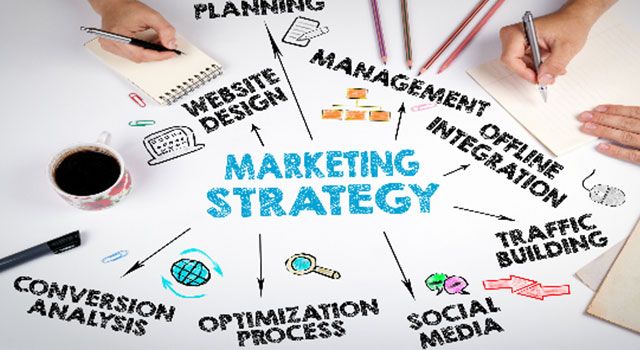
“Continuous Improvement” is a Great Target!
Improving Your Business
All businesses need systems to produce the information that the leadership team requires – most SMEs will benefit by modelling your systems on those implemented by larger businesses in your industry.
Preparing and continually reviewing the BUSINESS PLAN is the key planning document.
Implementing a CULTURE OF CONTINUOUS IMPROVEMENT is a key feature of outstanding SMEs.
Preparing PREDICTIVE ACCOUNTING REPORTS is the “FINANCIAL LANGUAGE INTERPRETATION OF THE BUSINESS PLAN” and is a vital document for the Leadership Team to continually review performance against.
Establishing set times for meetings within the organisation will enable the implementation of the RHYTHM OF MEETINGS that all successful large companies and many SMEs operate.
The 52-WEEK OF THE YEAR BUSINESS SYSTEM really establishes the concept that the accounting/administration functions are required to be performed week by week during the year, not just at the end of a month or even worse, only at the end of the financial year.
When the Leadership Team have completed the “who is this business” document discussed in our previous edition, the next task is to document the VISION.
Many SMEs find that assistance from an experienced virtual CFO is beneficial in the preparation of the ‘vision document’ comprising:
Business Plan: a “living document”.
Predictive Accounting Reports: Budgets – Key Drivers – Cash Flow Forecasts – Projected Balance Sheets
This series of reports is the ‘financial interpretation’ of the Business Plan. Your advisor could act as the ‘financial storyteller’ by being able to utilise the Projected Balance Sheet, to identify what your company’s Balance Sheet will look like in three or five years’ time or even later years, if the business is able to perform to the targets that have been set.
Analysis of the Financial Projections: the Leadership Team will want to know what all this means. Is the company going to require additional funding? If so what sort of funding – loans or equity capital?
A key question is: does the company have spare assets that could be offered as security for a loan?
Is the company able to apply for a government grant because of research activities that the company has been undertaking?
Another funding opportunity is to raise capital direct from the public.
There are three main opportunities for capital raising by SME companies. These should be explored to determine which one (if any) is suitable for your company to utilise:
Section 708 of the Corporations Act: enables a company to raise up to $2 Million from a maximum of twenty investors in twelve months.
Early Stage Innovation Company: If the company’s young and has been involved in Research and Development for innovative activities the ESIC process could work.
Crowd Sourced Funding Equity Raising: if your company’s turnover is under $25 Million and the gross value of assets is under $25 Million, the company could raise up to $5 Million in twelve months by being assessed as eligible to utilise CSF equity raising.
These are some of the issues that need to be considered as you prepare the ‘Vision Statement’ for the company.
This business process commences with the BUSINESS PLAN.
The Business Plan should be prepared over a number of sessions with the Leadership Team, normally with an advisor, to discuss the vision relating to where you would like the business to be at a future date.
The process starts with an analysis of the key components:
Customers: Are they happy? Are you supplying them all of the goods and services in your category that they are looking for?
Suppliers: Who are they? Where are they located? Are there potential supply problems emerging? Should you be seeking additional suppliers so that the supply chain will not be broken because of events in overseas countries?
Team: Are they motivated and enthusiastic? Have team training programs been implemented? Gained input from the team?
Premises: Are they suitable? Do they fit your vision?
Products and services: Are you happy with the products and services that your business is producing? Do you need to make changes? Have you undertaken Research & Development activities to be able to launch a new product?
Inventory: Has a critical review being made of the business’ inventory policies?
Debtors: What is the debtors’ days outstanding? How does this compare to industry averages? Is there enough emphasis devoted to debtors’ management to improve cash flow?
Rhythm of meetings: Is there one? Or are meetings only held occasionally? Would it be better to have a fixed timetable for daily, weekly, monthly meetings? This is a commitment to quality time so that the Leadership Team have time to think and plan.
Competitors: Does your business regularly monitor your competitors and identify where you think they are trying to head? Should you be changing your strategies so as to better compete with your competitors?
Capital expenditure: Are you planning major capital expenditure projects over the next few years? Have these expansions been costed? What effect will the capital expenditure program have on your cash flow and on your long-term business prospects?
Business operations: What is the plan for trading over the next few years? Do you expect business to be similar to what it is at present or are you anticipating a significant increase in sales?
The ‘Business Planning Process’ is important for businesses irrespective of their size.
All businesses large and small need to be implementing a ‘Culture of Continuous Improvement’ to combat the challenges of 2024 and beyond.
Observing and learning how a larger business operates can be very beneficial for an SME operator.
Every business needs a Leadership Team and whilst in a larger business most of the Leadership Team members are probably employed on a full-time basis, SMEs do not have that luxury and in most cases, only a few of the Leadership Team will be full-time team members, while the others could be consultants that are engaged for specific specialist activities.
SMEs will find that consultants will probably be engaged for services such as CFO, Marketing Manager and Communications Manager.
A key task for the Leadership Team is the preparation of the ‘WHO IS THIS BUSINESS’ document.
This covers the key tasks – vision – strategy – execute – success
Ideally, this document is reviewed annually at the firm’s STRATEGIC REVIEW MEETING, which is a must for most companies who are ‘scaling up’ or just wanting to keep ahead of how they performed last year.
The documents that flow from the ‘who is this business’ include:
Business Plan: this must be a ‘living document’, NOT put into a drawer and forgotten about.
Predictive Accounting Reports: Budgets for all business units – Key Drivers – Cash Flow Forecast – Projected Balance Sheets
The Projected Balance Sheet: enables the Leadership Team to be able to gain a visual understanding of what the business should look like in three or five years’ time, so long as the Budget Forecasts are achieved
The VISION Process: enables clear thinking to be given to some very important items:
- Research & Development Projects
- Intellectual Property Development
- Investment in TALENT
- TEAM TRAINING AND PROFESSIONAL DEVELOPMENT
- Capital Expenditure
- Scaling Up
- Funding – where is it coming from?
- Loan funds – is there enough security available for the lender?
- Capital raising from the public
When these activities are concluded, the CEO should then communicate the VISION for the business to the entire team. “This is our business and this is what we want to achieve over the next few years!”
In our experience, SMEs benefit from modelling their business on larger businesses, preferably in the same industry. Let’s dig deeper into that concept…
“Rhythm of meetings” is an important process that large businesses implement. They ensure that the meetings are held irrespective of who can attend on any particular date. These meetings are not meant to be talkfests, but to discuss important issues that the invitees need to be aware of. A program can be implemented for:
Daily meetings, which might only be for 5 – 10 minutes, to consider urgent issues that arose yesterday and planning initiatives for today.
Weekly meetings could be conducted by the Leadership Team, to review current key data but also for individual workgroups to meet. Weekly meetings can also be conducted to review the current position on projects and to identify any problems that are being incurred on a particular job.
Monthly meetings could include a Leadership Team, to consider the business performance in the previous month and to formulate a report to be submitted to the Board of Advice and/or Board of Directors meeting.
Some companies also have a monthly/quarterly ‘State of the Union’ meeting with the entire team, to keep them informed of developments and the strategies. These meetings contribute to the ‘Culture of Continuous Improvement’.
An SME can implement a similar process to keep the team informed, especially if the business is committed to a SCALING UP PROCESS. Activities will be hectic and the team need to be kept informed.
52 Week of the Year Business System: as the name suggests, businesses operate throughout the year and the accounting/administration systems should also operate throughout the year, not just at the end of a month or at the end of the financial year. Data is required to assist management in making day-to-day decisions and receiving:
Daily reports: potentially relating to production or sales for that day
Weekly reports: performance and profitability report / Key Performance Indicators
Financial update: debtors – inventory – bank – creditors
Monthly reports: Profit and Loss Account for each business unit with comparisons to Budget
- Balance sheet with supporting ratio analysis
- Key Performance Indicators / Business Metrics
- Working capital analysis compared to The Predictive Accounting Reports Forecast
‘Financial Position Report’ for Board of Advice/Board of Directors meetings.
Towers Business Development can assist SMEs implement these key processes. To find out more, contact us on 1800 232 088 or email peter@towersbusines.com.au, to arrange a complimentary initial consultation via Zoom.
If you would like to have a discussion with Peter Towers the Founder and Managing Director of Towers Business Development and a former Chief Financial Officer and Company Secretary of a Listed Public Company please do not hesitate to contact us - 1800 232 088 or email peter@towersbusiness.com.au and we will set up a complimentary Zoom meeting to discuss.
If you want more information please visit our website www.towersbusiness.com.au
Stay safe!











































